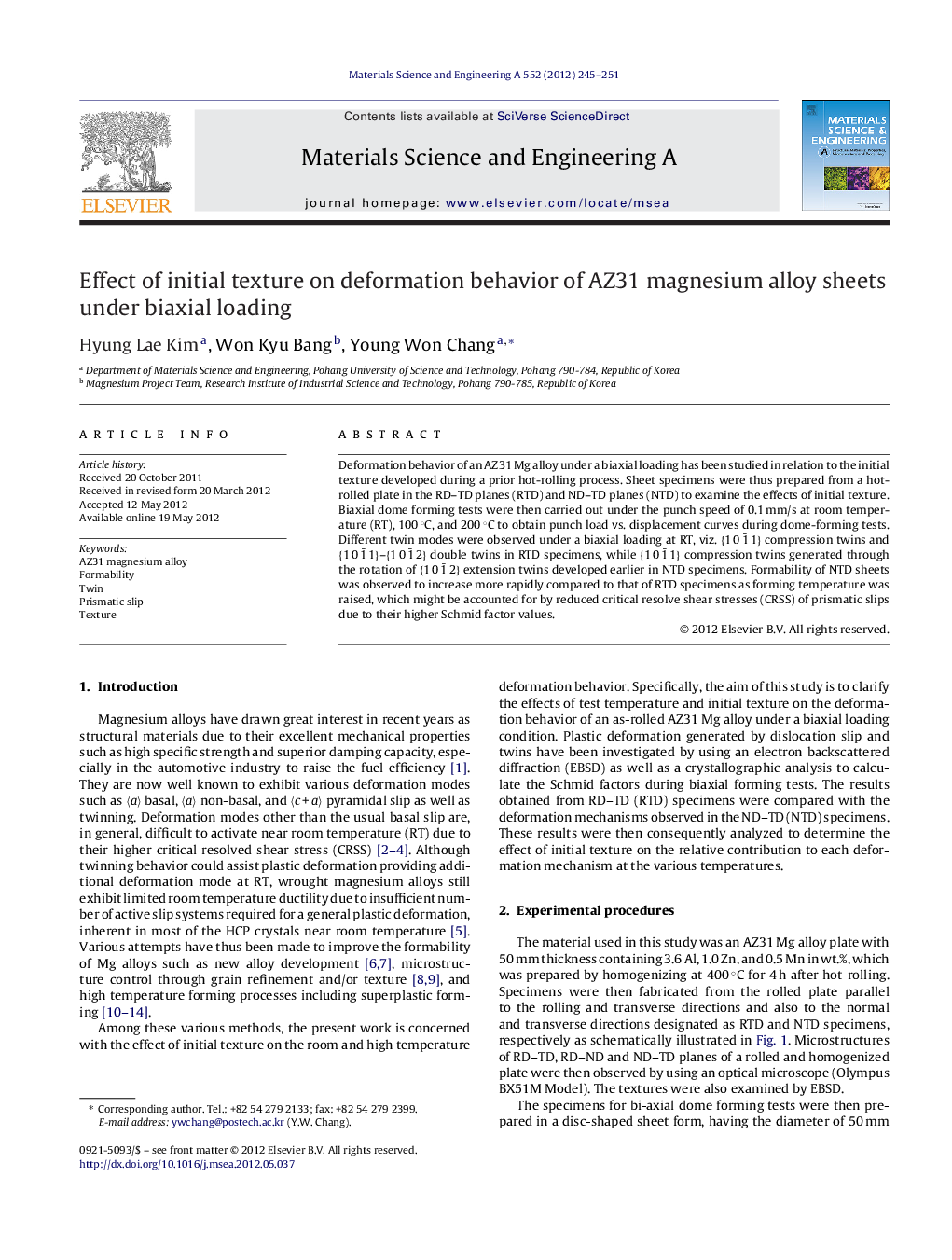| Article ID | Journal | Published Year | Pages | File Type |
|---|---|---|---|---|
| 1576971 | Materials Science and Engineering: A | 2012 | 7 Pages |
Deformation behavior of an AZ31 Mg alloy under a biaxial loading has been studied in relation to the initial texture developed during a prior hot-rolling process. Sheet specimens were thus prepared from a hot-rolled plate in the RD–TD planes (RTD) and ND–TD planes (NTD) to examine the effects of initial texture. Biaxial dome forming tests were then carried out under the punch speed of 0.1 mm/s at room temperature (RT), 100 °C, and 200 °C to obtain punch load vs. displacement curves during dome-forming tests. Different twin modes were observed under a biaxial loading at RT, viz. {1 0 1¯ 1} compression twins and {1 0 1¯ 1}–{1 0 1¯ 2} double twins in RTD specimens, while {1 0 1¯ 1} compression twins generated through the rotation of {1 0 1¯ 2} extension twins developed earlier in NTD specimens. Formability of NTD sheets was observed to increase more rapidly compared to that of RTD specimens as forming temperature was raised, which might be accounted for by reduced critical resolve shear stresses (CRSS) of prismatic slips due to their higher Schmid factor values.
► Final texture of NTD specimens contained mainly {1 0 1 1} compression twins after biaxial forming. ► RTD specimens contained {1 0 1 1} compression twins and {1 0 1 1}–{1 0 1 2} double twins after forming. ► Schmid factors of prismatic slips were estimated to be higher in NTD specimens. ► Formability improvement of NTD with temperature is due to reduced CRSS of prismatic slip.
